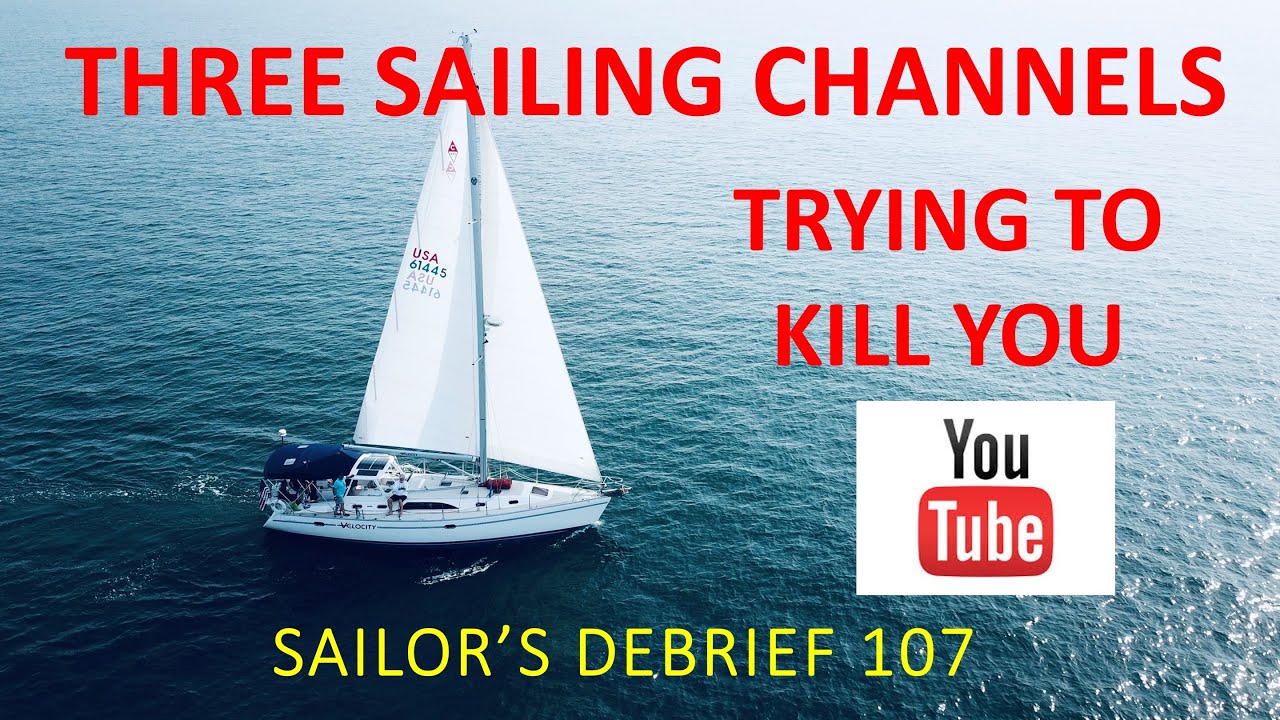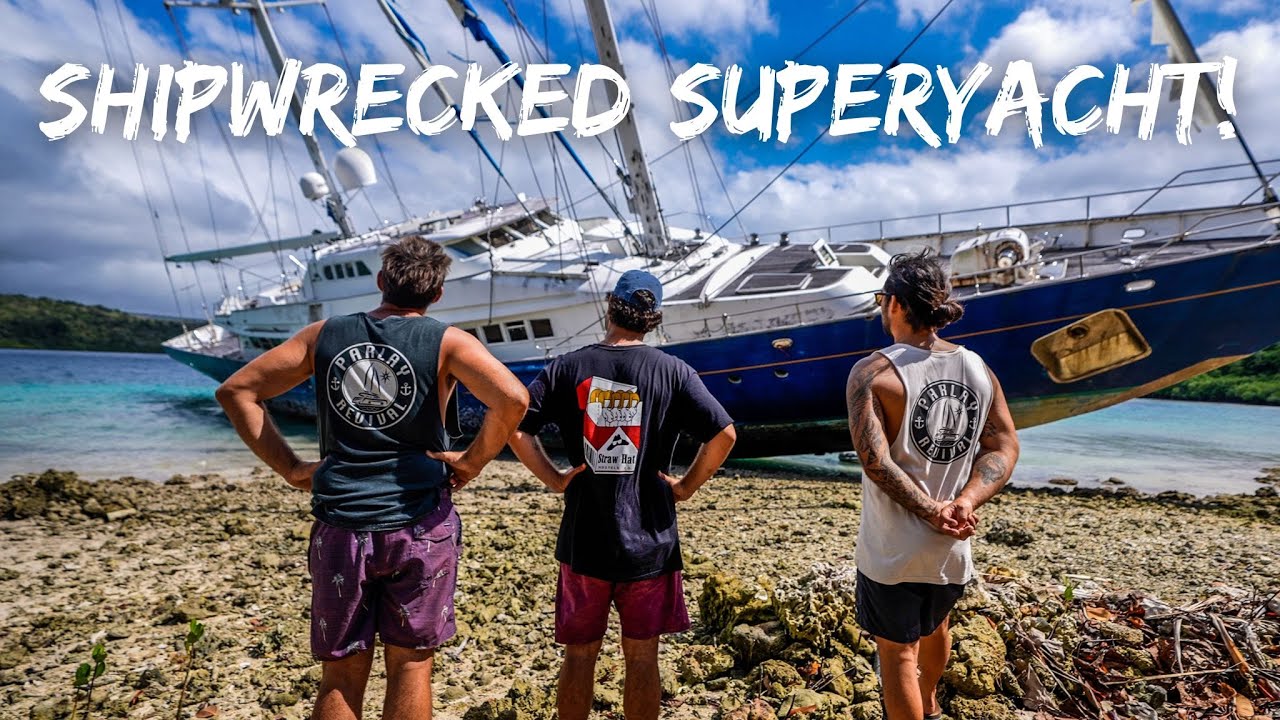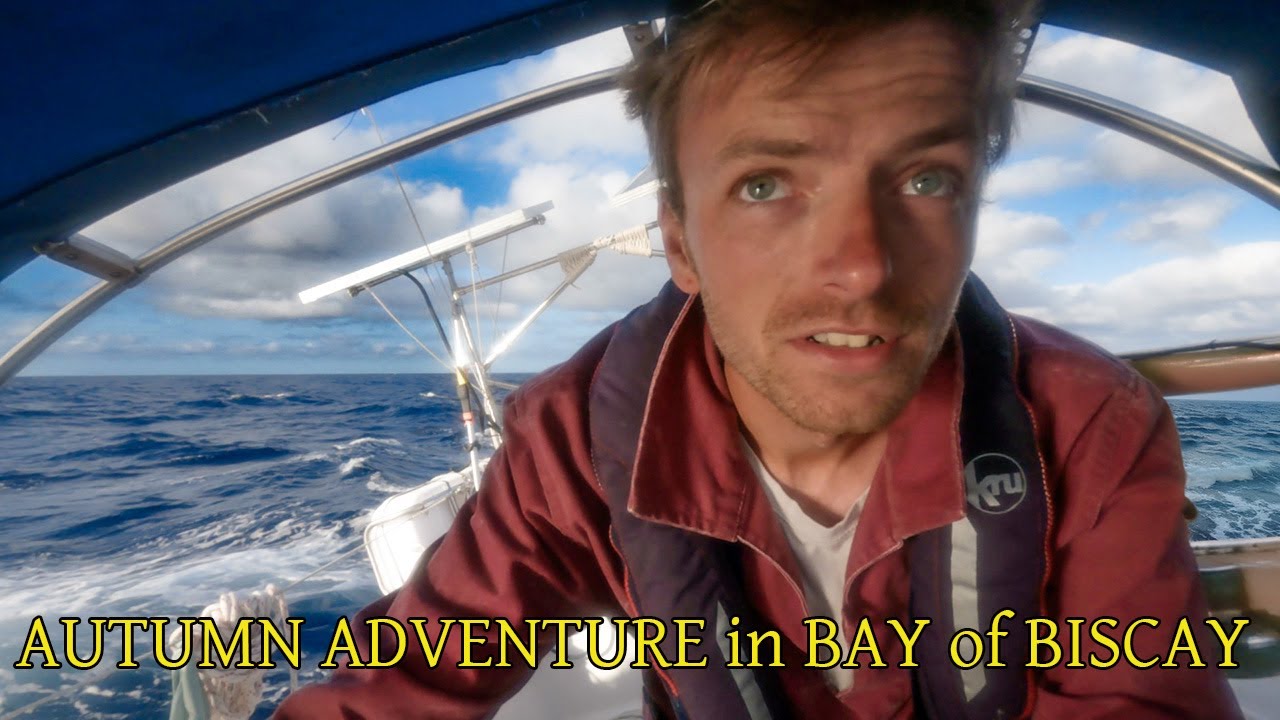Siguranța navigației este critică, iar alegerea echipamentului și utilizarea acestuia pot avea un impact semnificativ asupra șanselor de supraviețuire într-o situație de urgență. În timp ce hamurile de pe vestele de salvare sunt esențiale, legăturile, care te țin atașat de barcă, fixate incorect, pot fi o chestiune de viață sau de moarte. Hamul de pe vesta de salvare (PFD) îndeplinește standardele ISO și/sau USCG și este conceput special pentru acest scop. O legătură cu eliberare rapidă sau un sistem de eliberare a hamului (HRS) este, în general, considerată mai sigură decât o linie legată de o vestă de salvare sau un ham. Mai exact, legarea unei linii de o vestă de salvare va rupe cel mai probabil vesta și va separa persoana de vestă. Mai mult, studiile au dovedit că o linie legată direct de o vestă de salvare sau un ham creează un risc semnificativ de încurcare și risc de târăre și înec. În cazul unei căderi peste bord sau al răsturnării barca cu pânze, marinarii pot fi prinși rapid și fatal sau târâți până la moarte. Victima se poate găsi inversată, incapabilă de a ajunge la suprafața apei sau poate crea suficientă forță necesară pentru a tăia o linie cu un cuțit în timp ce se află sub apă. Dimpotrivă, o prindere cu eliberare rapidă oferă un avantaj crucial de siguranță. Conceput pentru a se detașa atunci când este împiedicat, împiedică purtătorul să fie prins sau târât. În situații de urgență, legătura poate fi eliberată cu ușurință, permițând individului să înoate liber și să ajungă la suprafață. Această mobilitate suplimentară poate însemna diferența dintre viață și moarte. În plus, o vestă de salvare legată poate împiedica eforturile de salvare. Salvatorii pot întâmpina dificultăți în a elibera victima din încurcătură, pierzând timp prețios. O prindere cu eliberare rapidă elimină acest obstacol, permițând salvatorilor să se concentreze pe aducerea individului în siguranță. O legătură cu eliberare rapidă acordă prioritate siguranței și mobilității, reducând riscul de înec și facilitând salvarea. Este esențial ca persoanele care se angajează în navigație să înțeleagă implicațiile alegerilor lor de echipamente și să opteze pentru cea mai sigură opțiune disponibilă. Un cătuș cu eliberare rapidă la capătul hamului este deosebit de important în cazul în care purtătorul rămâne prins sub o barcă răsturnată (cum s-a întâmplat la cursa Sydney-Hobart din 1998) sau într-un loc strâmt, cum ar fi pe partea greșită a unui foaie de braț. Declinare a răspunderii: informațiile furnizate aici sunt destinate exclusiv cunoștințelor generale și scopurilor informaționale. Aceste informații sunt extrase din regulamentele speciale World Sailing Offshore (OSR). Acordați întotdeauna prioritate siguranței și consultați experții sau autoritățile relevante pentru îndrumări specifice legate de situația dvs. Mulțumesc sail@ministryofsailing.com Link-uri către canale https://youtube.com/shorts/TiMJh9vMnQU?si=RahkaAoricm3nTRK https://www.livestrong.com/article/456880-the-speed-of-human-swimming/ https ://youtu.be/8vlkUzzsdPA?si=_p3yiD17VIdKB1MG Băieți buni. https://youtube.com/shorts/QsXGI7vowHY?si=AiN5g0m06b7xzyDD https://youtu.be/uUx6oZTCQc8?si=l-iCp37jOMOGaNdS Declinarea răspunderii privind drepturile de autor în temeiul secțiunii 107 din Legea privind drepturile de autor din 1976, se ține cont de „folosirea” scopuri precum critică, comentariu, știri, predare, burse, educație și cercetare. Utilizarea loială este o utilizare permisă de legea dreptului de autor care altfel ar putea încălca. Mulțumim US Sailing https://www.ussailing.org Cruising Club of America https://sas.cruisingclub.org/ World Sailing Https://sailing.org/ #boat #boating #boatlife #offshorecitizen #offshoresailing #sailing # safetyatsea #offshoreracing #ocean #sailboat #oceanrace #rescueswimmer #vaikobisail #radixnutrition #barkarate #sailingpodcast #barkarateconversations #worldsailingofficial #sailing #boat #ocean #sport #voile #sail #sea #offshore #sailors #sailingworld #extremeyachting #foils iahturi #saillife #instayacht #sailingblog #instasail #spinlock #worldsailing #megayacht #Americascup 0:00 Introducere 00:45 învață cum să navighezi în siguranță (Reguli de navigație) 01:18 Canalele de navigație populare încearcă să te omoare 02:00 Echipament de siguranță pentru navigație 02:15 Vestă de salvare și legătură necorespunzătoare (Ambasadorul mărcii West Marine) 02:38 Tragerea de pe o barcă cu pânze 02:56 Catalina 22 Lifeline Danger 03:28 Omul peste bord a dat un sfat foarte greșit 04:00 Tehnici de navigație periculoase 04:30 Vesta de salvare USCG Aprobat PFD 05:00 Canale de navigație și veste de salvare foarte proaste 05:26 Legături pentru vestă de salvare, Cum să navighezi 06:00 Cum să navighezi cu o linie Jack 06:30 Cum să navighezi în siguranță 07:00 Cât de departe poți înota în apă rece 07 :20 Moarte prin hipotermie și navigație 07:48 Câți ani trebuie să aibă un copil pentru a purta o vestă de salvare 08:10 trei sfaturi de siguranță la navigație 08:35 Echipament de siguranță pentru navigație dovedit 08:50 Siguranța navigației în SUA pe mare #sailing #boat #ocean # barca cu pânze #boatlife #offshoresailing #barkarate #boating #extremesailing #barkarateconversations
source
Trei canale de navigație care încearcă să te ucidă – Sailor’s Debrief 107

47 thoughts on “Trei canale de navigație care încearcă să te ucidă – Sailor’s Debrief 107”
Comments are closed.




Little things that no one really talks about. Appreciate it
With a YouTube channel called the ministry of sailing and your opinions clearly you would like to be in charge of something. The logic of not wearing a life vest when sailing far offshore is sound.
Ministry of sailing, but definitely not the ministry of correct grammar. Trying kill to me?
You're absolutely right to emphasize that harnesses and tethers must be set up to keep your crew on deck.
Aboard BARBARIAN, we have rated D-rings mounted in the cockpit as well as taut jacklines running forward well toward the centerline of the boat. Someone who slips and falls cannot go overboard.
We carry inflatable PFDs with harnesses built in. They're comfortable and unobtrusive to wear, so we wear them. That means one less step to prepare when the weather turns foul or if someone needs to run forward. We just need to clip in, and that takes only a few seconds.
I will say that working on the foredeck with a tether can become a bit of a tangle if you don't take care to maintain the topology that you came forward with. It's embarrassing to clear a fouled genoa sheet only to end up fouling it and yourself with the tether. But that's all thr more reeason to gain practice under safe conditions, well before setting out into more chaotic weather.
There is some dangerous survivor bias in these videos. We are prone to think acts we got away with repeatedly are safe practices, when really we just got lucky.
Useful and infomative tutorial on length of life line tether. Famous movie quote: "Never get out of the boat".
If you can afford a boat you can aford a decent lifejacket and a a decent tether. Very hard/virtually impossible to drag yourself back on the boat out of the water, plus a good chance that you'll be pulled into the water. 1 mile in 60 degree water would be difficult, potentially doable to save your life, with a suit on you'd be able to do it, without one much more difficult and certainly you're not going to be in great shape when you get there and unless its a beach/easy climb out of the water you probably won't be able to get out of the water. I wouldn't recomend it, a life jacket serves the ability to keep you on the surface and enables you to concentrate on keeping your bodily warmth around you.
This will also sound like a commercial plug – and it is in a way but because I believe the product has a point – I'd recomend having a look at team-o's life jackets, they are designed so if you do end up in the water attached by a tether it will turn you round and tow you on your back, rather than face first which has drowned people.
A boat tether is to keep you from falling off the boat not keep you attached to it.
That thumb nail is trying kill to you
You mean some people watch sailing videos for information? I thought it was for the pretty girls, what does a bass fisherman know?
the person who says. it will allow you to drift.. drift ?
so its a ststionary boat ?
bodies drift the living want to stay living.
i have sailed around the world 2.5 times.. saw 2 ppk die.
3 if the hearty salty sailor who climbed a power pole to get him rocking self a little current its all the ssme right.
kind of but some is 1500 Volts and 2350 amps.
he literaly blew up and hung there for 3 days sometimes reigniting.
small island power meets holie
get a best practices book while your at it send dont need no lifevest dude maybe then the insurance will pay out
so your family can eat
I’m constantly surprised at how many sailing youtubers don’t take basic safety precautions. I wear an inflatable PFD with a whistle, strobe, and small floating VHF radio on me before i leave the breakwater. Next on the list is a PLB.
I stopped watching Christian Williams after his video on safety and his 'one hand for the ship' recommendation, especially for kids. His tether set-up assumes that he would fall over the lifelines and that he'd be fit enough to haul himself up to the rail from the water. What a joke.
I honestly don't care when people do dangerous things that put them at risk. Where I draw the line is when they begin to advocate that others do dangerous things in an unsafe manner. The more trusted an authority figure, or the broader their audience, the more agitated I get. If you want to unalive yourself by being dumb then go for it, but don't trick others into doing it too.
Well Done. My only offshore sailing was on a 37' sailboat. No one went on deck without being on tether to the boat–no one. We had a safe & uneventful trip & I considered the purchase of my own safety equipment as "the price of admission" to that great experience. My work took me in another direction but, I'd go sailing with a good, safe sailor tomorrow if offered.
Wow, those were pretty good examples of what not to do.
It was Yachting Monthly I think, that proved that any speed over 2 knots you cannot haul yourself up a trailing line in your gear no matter how strong you are
As a youngster in greece working on a little boat with 14 passengers,on the return me and captain win many bears by playing the game,throw a rope net off and none of these fit youngsters could make it back to the boat ,at low speeds ,,,,
I applaud you for calling out these Youtube channels where they practice the most dangerous attitudes to being on the water. Nowadays it is popular to buy an old boat, fix it up a little bit and then take that boat around the world. Preferably with a lot of drama, but in all case completely unsafe. One big storm and they sink and all of that for the clicks on Youtube.
So, keep up the good work. 👍
When the average boat is moving at hull speed, it takes 3 to 3.5 seconds to move one boat length. It does not matter if the boat is 15 feet or 80 feet.
Knob
My friends son swam 11.8 miles from Fremantle to Rottnest Island. Very quickly. He is a superb athlete and highly trained ultra marathon swimmer. The rest of you are not. Thanks for an excellent video. We follow a simple rule. Life jackets are not negotiable. Like seat belts in cars, they save lives. Month after month we have young guys fishing on our Moreton Bay who go overboard and are never seen again. Their lifejackets are usually neatly stowed on board. The reason they are never seen again is probably down to our very healthy shark population.
Great, well reasoned advice. Anyone ignoring these things after seeing this video doesn't deserve a boat.
I swim in my local bay at that temperature…without a wetsuit, 30 minutes is the most I can do before I'm too cold. (In fact I usually swim in a wetsuit because I can stay in longer and to avoid feeling like a block of ice at the end). Swimming is also very slow and if there's any tidal flow against you it likely exceeds your swimming speed.
So what did we learn? Do a safety course if you want to learn safety. Never once have I heard Christian tell me how I should do something. Simply how he does it.
Ministry of Sailing. Sure. No thanks Reverend… I'd ship with Christian in his well-found Erickson Thelonius in a a minute. These by the book idiots- never. Remember- if its not in the books these so called experts are lost. Take another lap around the lake LoL.
I am not a a sailor never have been, except a U.S.NAVY sailor. The best take away for me is DO YOUR RESEARCH, DO YOUR RESEARCH! I'll watch more of these videos in the future, not that I'll be sailing anywhere but, it is so logical and I do watch lots of sailing videos, very informative!
Thank you man!! Really usefull video, straight to the point, i only hope now the algoritm shows it to their audience.
Wow…YouTube can be a great resource for learning things, but there are a lot of dummies out there. The old guy showing off his tethering method on the dock is my favorite. If he fell overboard while the vessel's heeling — on the high or low side — I strongly doubt he'd be able to pull himself aboard.
Have a rope type ladder that can deployed from the water. SOLAS training will tell you that almost no regular human can swim 25YDS in the clothing that might be worn on board while at sea.
99% of sailing channels are trash. That being said, you don't have to wear PFDs by law, above a certain age. The Pardey's never wore PFDs. Smart, probably not, but it's a personal decision.
At 5 knots most people don't have the strength to pull themselves through the water back to a moving boat.
Great video. I sometimes watch CW's episode but somehow I missed his opinion on life vests. He couldn't be more wrong. As I like to put it… It doesn't matter how well you swim. Or how hard you hold on. What matters is how hard the boom hit you over the head when it sent you overboard.
But I wonder if you can elaborate on the near shore vs offshore life vests. Falling overboard offshore, it seems to me that you either get rescued ASAP, or remain bobbing in the water for the rest of your life… A survival suit doesn't seem a feasible choice for most cruisers.
The guy saying he never puts kids in life jackets should have his boat taken away.
The others are adults they can decide for themselves.
But the guy with the kids made me angry.
I have fallen off at 6 knots fully clothed and managed to grab the webbing side handle on the inflatable that was being towed behind the yacht. I can tell you at the age of 25 being fit and strong there was no way I could maintain my grip as the drag through the water fully clothed was substantial. I was not tethered on. Fortunately for me the skipper brought the yacht round and got me. It was on an inland waterway in 15c temp. I learnt my lesson and was lucky. Now in my 60s and sailing mainly 2 handed our setup is as this gentleman states. Any other way I know I am toast if I end up overboard.
As an off-shore and off-shore arctic sailor, very true. Funny thing about the idiots (with the USofA flag. of course!) in the last seconds of the video: one does NOT send emergency signals by waving both hands in the air, even if you were demasted, and you are safe and there is nothing really wrong or you are not in any danger. Poor idiots!
Then again, most of the divers in the youtube videos, even some self-claiming (very) semi professional ones, raise their diving goggles to the forehead. And no, one does not do that, as that is also an emergency signal given by the diver!
Then again, darwinism works fine, still does, after all the info is available in few seconds, nothing seems to improve with these clowns.
Mr Schaefer ? Thank you for your sincere concern about safety on board boats. I appreciate it.
Thank you for this video. I can’t believe the things that I have seen boaters try to do on land let alone on the water.
As a sailor of forty years; I completely agree that your tether should keep you 'on' the boat; Even if you're not solo, yachts are heavy, moving objects. Every now and then, you'll get a wave that unbalances you.
Excelente vídeo!
Eu servi na Marinha do Brasil
A quantidade de acidentes que acontecem, ano a ano, por conta de não levarem a sério medidas de segurança, é absurda, no meio naval, militar ou civil.
Yeeeeah but I’m still going to watch Mr Williams’ channel religiously. While I appreciate what you have shown here, and you are accurate I might add, I have also gained an incredible amount of knowledge from his channel. It’s very enjoyable as well. I actually had watched the video you pulled the clip from and back then I said I’m not going to do that. That said it’s every sailors responsibility to be his or her own safety enforcement. Common sense is a big part of anything you do on the water and you can not take anything for granted. So of course you should always wear a vest. For me it’s all the time not just underway or when on deck. For someone else it may only be when under way and on deck. I wear mine always because if I’m below deck and something goes wrong I don’t want to waste precious time looking for and putting on my vest. Some may think this is overkill. Perhaps. However, I’d rather be too safe than not safe enough. I also carry two life boats and extra beacons. But that’s just me. I think you would be better served explaining what was wrong, which you did, AND contacting those creators and giving them an opportunity to correct and clarify their positions. This is just my opinion. It cost you what you paid for it.
Your comments about about the strength quality of attachment points are valid, however the rest of your diatribe does not consider the solo sailor, which one of your
examples references. WTF is a life vest going to do you as your boat sails away? And maybe a tether that would allow you to access the stern of your boat is valid. Also you are contradicting yourself when you say that a harness is unacceptable without a life vest, but insist that you need to be attached to a point that would not allow you to go in the water. Why the vest? Regulations for offshore races, which I have done a few, are important, but there are also cases of inflatable life vests that have gone off when a boat flipped and trapped the person in the inverted rigging. My personal life vest is manually activated only. . Sailing is not by-the-numbers event and risk is part of the deal. Drop the know-it-all arrogance,, please.
Terrific video…. Totally Correct in every aspect. Maybe the next video can be about jack lines, safety harness and life vest stowage and deck drills on how to safely move about in all types of weather?
Keep doing "youtubers are trying to kill u vids" by far your most successful vid🍻🍻 us youtube sailors are rule breakers and people need to be warned!!😂😅
Thank you for your definite statements.
Please let me add experience from a charter sailor's perspective, that is: You hardly manage to find or install enough hard points or jacklines on a charter yacht respectiuvely. To achieve the goal of staying on board, a sailor needs some extra rules, because he has to deal with compromises.
1. Find and define existing hard points and rails for suitability. A boat owner migth do this once and add extra points. No way on a charter yacht.
2. Practice, as you said, especially any elasticity of jacklines and find hardpoints, fulfilling the job of keeping your jackline in position thus you on board. Take your time to find out.
3. When sailing, take extra time when changing tether points. One single charter week or so never lets you get enough practice to do a change "automatically". You always have to use your cortex for a safe change.
Click bait title. Those Youtubers are not doing things with the best method, however they don't have the goal of killing people. They may be wrong, mistaken or use poor judgement with the best of intentions. Also be weary of advice from "experienced sailors", before the internet & YouTube, there were only books & other sailors in person face to face. Just because someone has sailed from CA to Hawaii or vice versa, doesn't mean they sail with the best procedures and practices. Mileage is an OK way to mark a sailors "experience" however it's not as reliable as aviators flight hours. The bottom line is to do more due diligence than the average person who is into sailing, especially if you are going to do a longer passage.